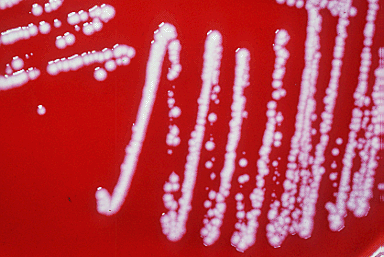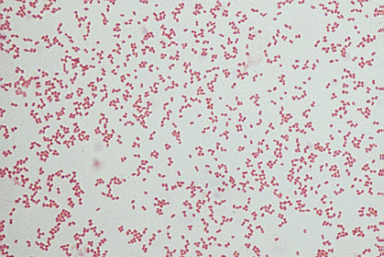ACINETOBACTER
ACINETOBACTER
 Acinetobacter species are oxidase-negative, non-motile bacteria which appear as Gram-negative pairs under
the microscope. Identifying the different species of this genus can be done through the use of FLN
(Flourescence-Lactose-Denitrification medium) acid results which determines the amount of acid produced
from metabolizing glucose. Also, most members of Acinetobacter show good growth on MacConkey agar
with the exception of some A. lwoffii strains.
Although many species of Acinetobacter can cause infection, A. baumannii is
the most frequently encountered species in the clinical laboratory. Like Pseudomonas, A.
baumannii can be linked to many hospital acquired infections including skin and wound infections,
pneumonia, and meningitis. A. lwoffi, in particular, is responsible for most cases of meningitis
caused by Acinetobacter. Because most species are resistant to penicillin and chloramphenicol, a
combination of aminoglycoside and ticarcillin is usually recommended for treatment.
Acinetobacter species are oxidase-negative, non-motile bacteria which appear as Gram-negative pairs under
the microscope. Identifying the different species of this genus can be done through the use of FLN
(Flourescence-Lactose-Denitrification medium) acid results which determines the amount of acid produced
from metabolizing glucose. Also, most members of Acinetobacter show good growth on MacConkey agar
with the exception of some A. lwoffii strains.
Although many species of Acinetobacter can cause infection, A. baumannii is
the most frequently encountered species in the clinical laboratory. Like Pseudomonas, A.
baumannii can be linked to many hospital acquired infections including skin and wound infections,
pneumonia, and meningitis. A. lwoffi, in particular, is responsible for most cases of meningitis
caused by Acinetobacter. Because most species are resistant to penicillin and chloramphenicol, a
combination of aminoglycoside and ticarcillin is usually recommended for treatment.
(under the microscope)

LABORATORY INDICATIONS:
- Oxidase -
- Non-motile
- Penicillin resistance (most strains)




Copyright © 1995 University of Texas - Houston Medical School, DPALM MEDIC, All rights reserved.
 Acinetobacter species are oxidase-negative, non-motile bacteria which appear as Gram-negative pairs under
the microscope. Identifying the different species of this genus can be done through the use of FLN
(Flourescence-Lactose-Denitrification medium) acid results which determines the amount of acid produced
from metabolizing glucose. Also, most members of Acinetobacter show good growth on MacConkey agar
with the exception of some A. lwoffii strains.
Although many species of Acinetobacter can cause infection, A. baumannii is
the most frequently encountered species in the clinical laboratory. Like Pseudomonas, A.
baumannii can be linked to many hospital acquired infections including skin and wound infections,
pneumonia, and meningitis. A. lwoffi, in particular, is responsible for most cases of meningitis
caused by Acinetobacter. Because most species are resistant to penicillin and chloramphenicol, a
combination of aminoglycoside and ticarcillin is usually recommended for treatment.
Acinetobacter species are oxidase-negative, non-motile bacteria which appear as Gram-negative pairs under
the microscope. Identifying the different species of this genus can be done through the use of FLN
(Flourescence-Lactose-Denitrification medium) acid results which determines the amount of acid produced
from metabolizing glucose. Also, most members of Acinetobacter show good growth on MacConkey agar
with the exception of some A. lwoffii strains.
Although many species of Acinetobacter can cause infection, A. baumannii is
the most frequently encountered species in the clinical laboratory. Like Pseudomonas, A.
baumannii can be linked to many hospital acquired infections including skin and wound infections,
pneumonia, and meningitis. A. lwoffi, in particular, is responsible for most cases of meningitis
caused by Acinetobacter. Because most species are resistant to penicillin and chloramphenicol, a
combination of aminoglycoside and ticarcillin is usually recommended for treatment.




